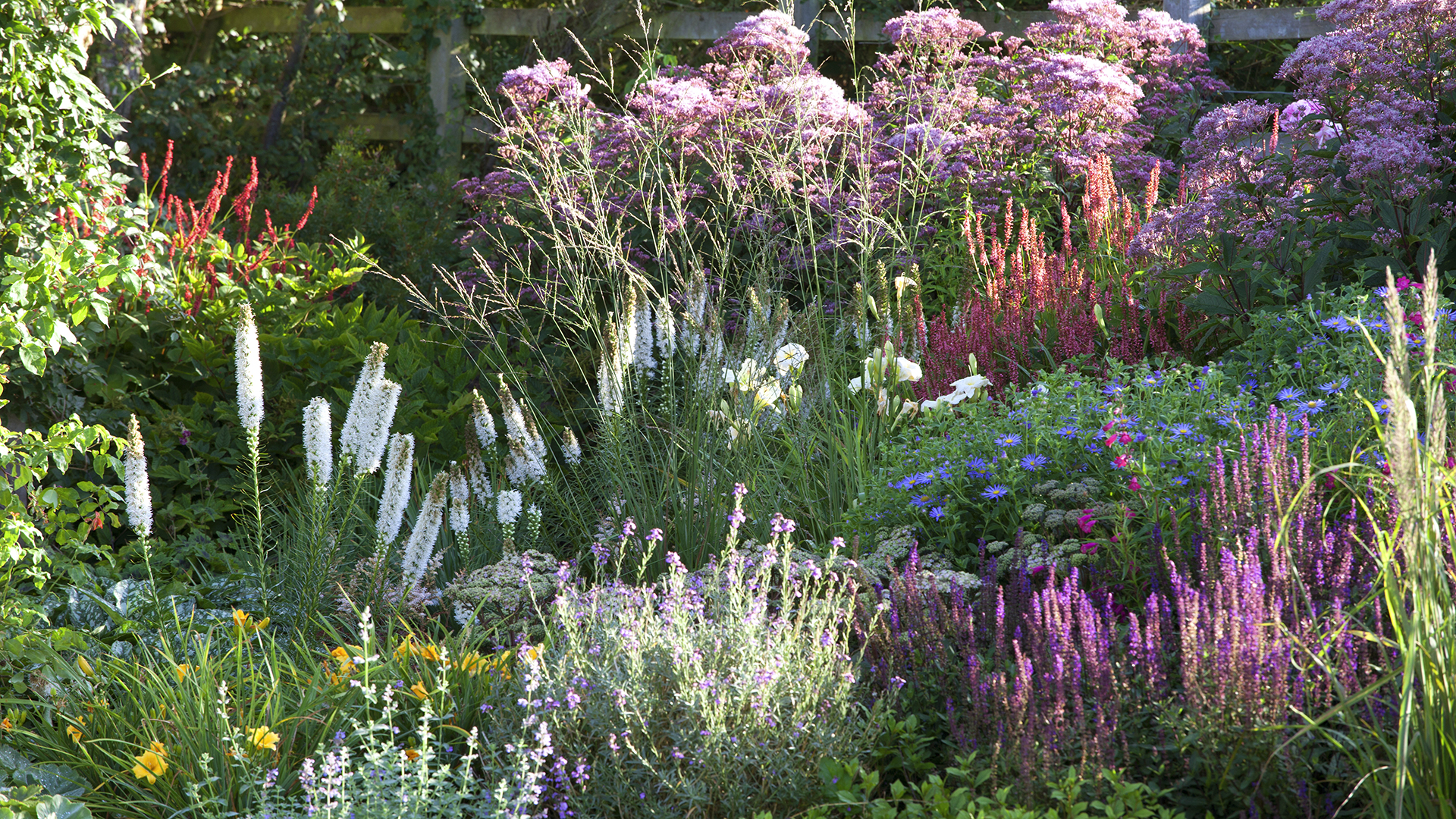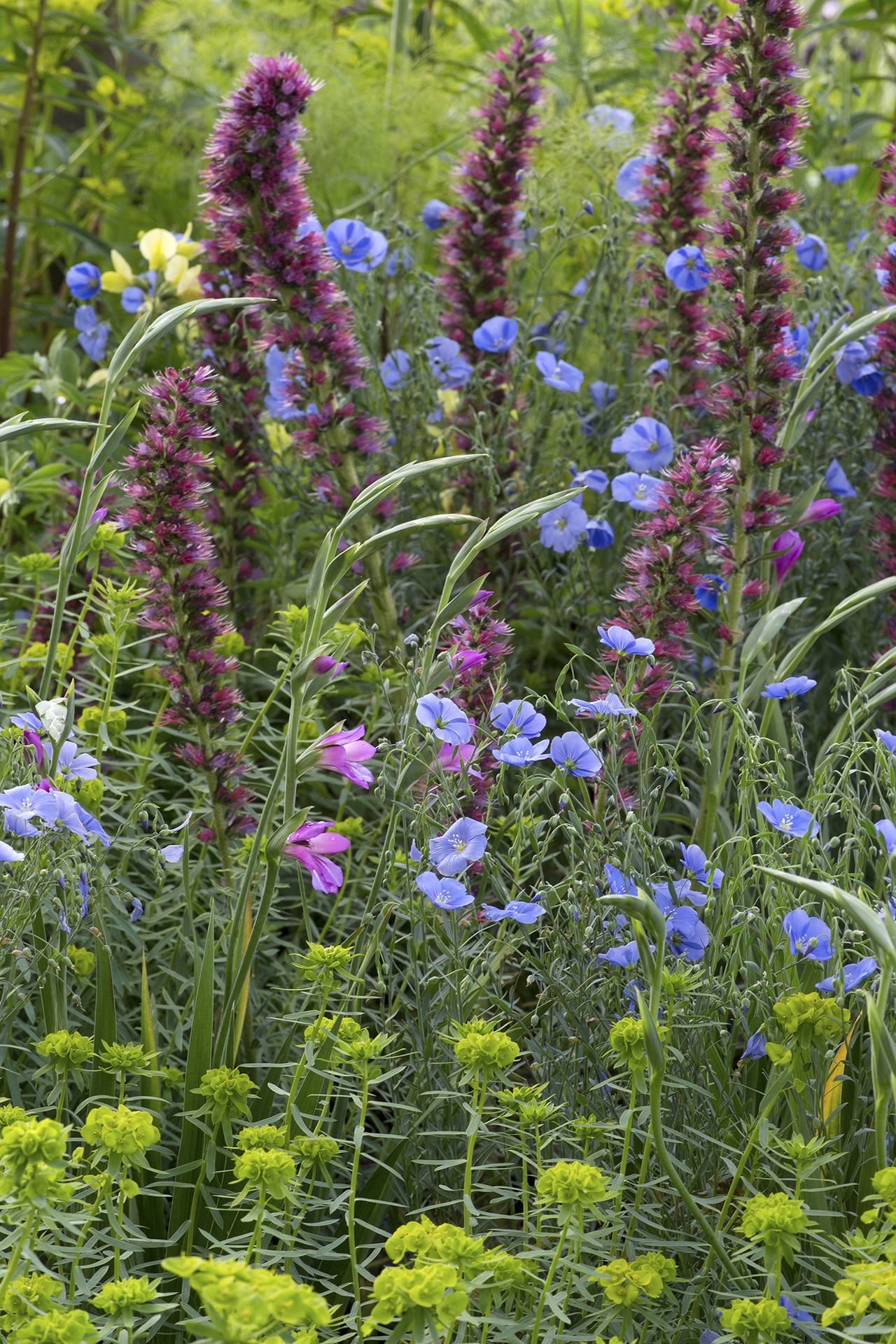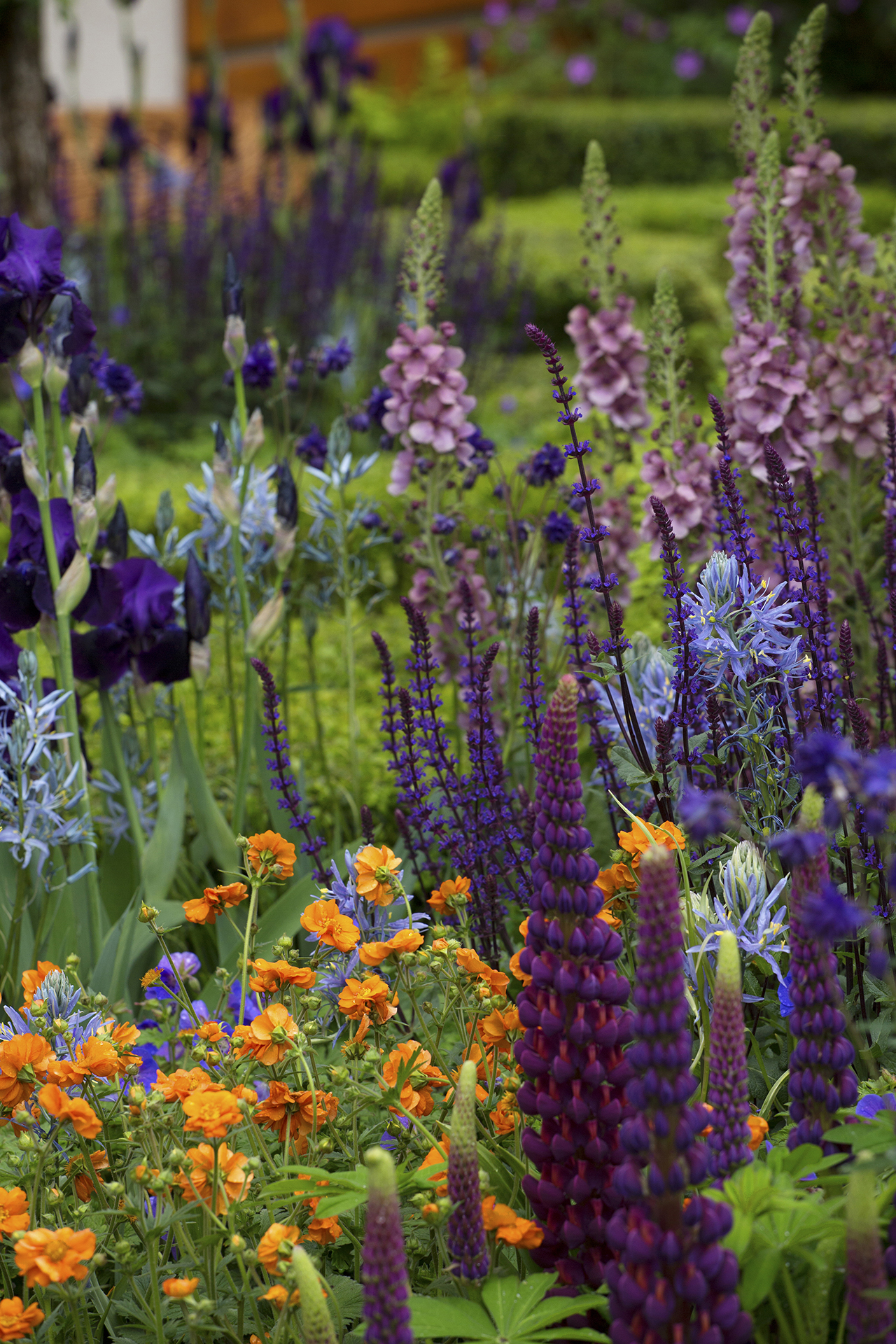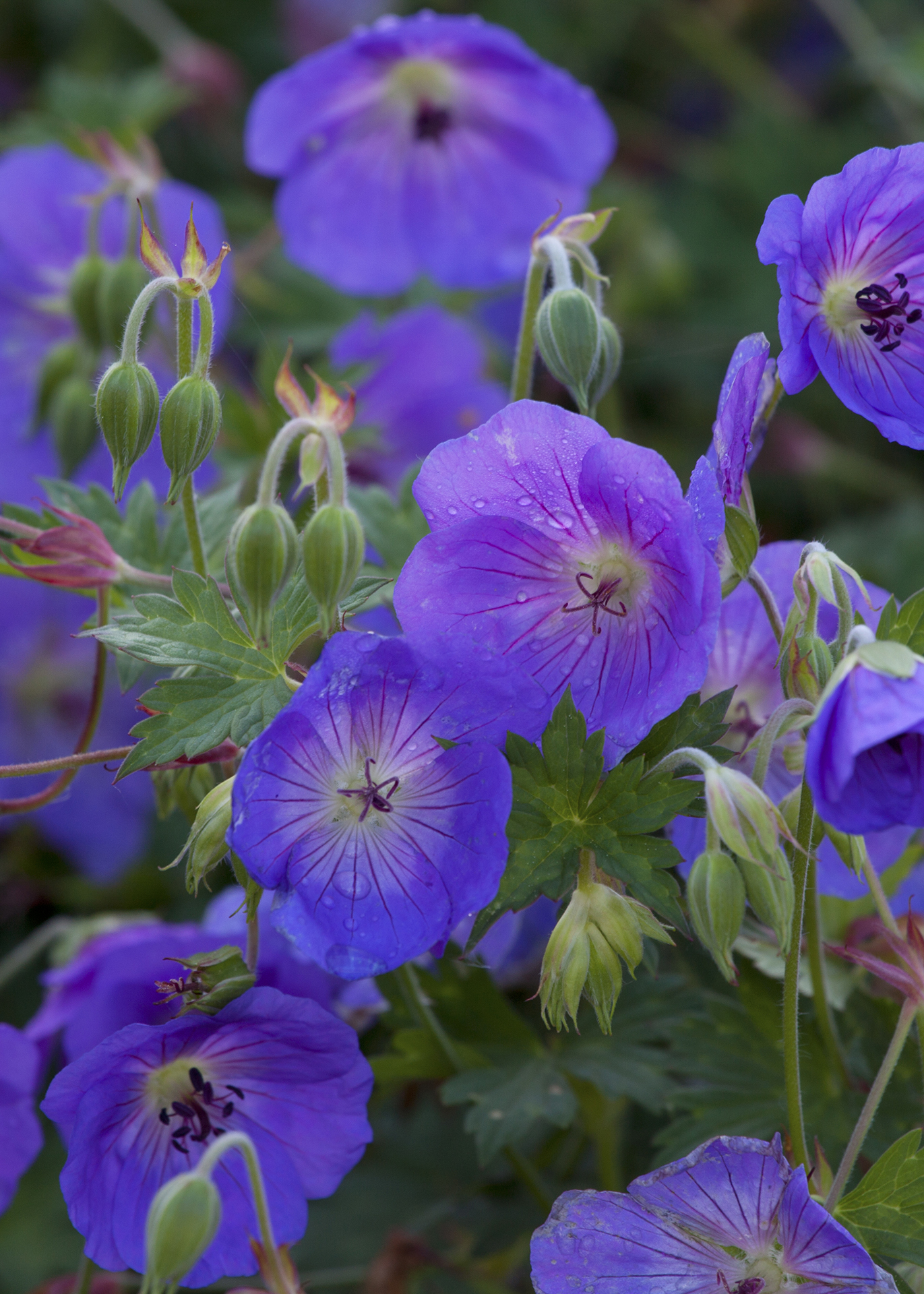Monty Don shares his simple tips for dividing herbaceous perennials
Now's the time to split herbaceous plants to rejuvenate growth and boost their flower power. The celebrity gardener explains how to divide and conquer

March is a time for new beginnings in the garden and, as TV gardening guru Monty Don explains, nothing likes a new start quite like a herbaceous perennial. And that, explains the Gardeners' World expert, means lifting and dividing them to give them a boost and create many more healthy new plants.
See: Take a tour around Monty Don's beautiful Longmeadow garden in Herefordshire
'It is worth doing this to all herbaceous perennials every three to five years,' writes Monty Don in this month's advice column on his website.
Herbaceous perennials are the reliable, dependable plants in our flower borders. They die right down to the ground in autumn and winter, but the roots remain alive and send up new stems and top growth in spring. They provide a wealth of flowers through the summer for seemingly little effort in return.

To keep the new season's growth healthy and full of flowers, established herbaceous plants should be divided.
And the time to lift and divide herbaceous plants is now, when the new growth is just starting to appear.
See: How to plant roses – a comprehensive guide to planting and caring for roses
Sign up to the Homes & Gardens newsletter
Design expertise in your inbox – from inspiring decorating ideas and beautiful celebrity homes to practical gardening advice and shopping round-ups.

It couldn't be simpler to lift and divide herbaceous perennials and the rewards are well worth the small amount of effort.
'Dig the whole plant up and discard the centre section to the compost heap, replanting the more vigorous outside parts of the plants in groups which will grow together to make one large plant,' writes Monty Don.
See: How to grow dahlias – a step by step guide to growing dahlias from tubers

'Dividing herbaceous perennials is part of the upkeep of any herbaceous border,' explains the presenter in a clip from Gardeners' World in which he demonstrates how to lift and divide vigorous Acanthus spinosus, chopping through it with a spade to produce multiple new plants that can be grouped or distributed throughout the garden.
Perennial geraniums in particular divide up very readily, explains Monty Don, as he demonstrates how they can be gently pulled apart by hand. The new geranium plants can also be replanted in a group, 'which will give them new energy and new vigor and therefore much better flowering,' he says. Alternatively, he says, the new plants can be moved to another spot in the garden or shared with fellow gardeners.
See: Monty Don reveals his top birdhouse ideas and expert tips

From all the plants in your garden, how do you know what is a herbaceous perennial? They are the plants you find in most herbaceous borders, the perennial geraniums, delphiniums, salvias and heucheras, to name but a few.
Many herbaceous perennials will reappear each year for up to 10 years, others are more short lived and will last not much more than three years.
See: Monty Don's bird feeding tips – attract and feed birds year-round
However, the one thing every gardener can do to rejuvenate herbaceous perennials is to lift them and divide them. This will make a big difference to how vigorously the plants grow and flower, and it will even help restock the flower border, too. And if it's extra plants you're after, then you can divide herbaceous perennials more frequently – every two years is fine.
Karen sources beautiful homes to feature on the Homes & Gardens website. She loves visiting historic houses in particular and working with photographers to capture all shapes and sizes of properties. Karen began her career as a sub-editor at Hi-Fi News and Record Review magazine. Her move to women’s magazines came soon after, in the shape of Living magazine, which covered cookery, fashion, beauty, homes and gardening. From Living Karen moved to Ideal Home magazine, where as deputy chief sub, then chief sub, she started to really take an interest in properties, architecture, interior design and gardening.
-
 'It's a fast reset button' – using the 1, 2 ,3 ,4, 5 decluttering method cleared my persistent mess in seconds
'It's a fast reset button' – using the 1, 2 ,3 ,4, 5 decluttering method cleared my persistent mess in secondsIt's easy, effective and so quick to do
By Ottilie Blackhall Published
-
 Nectar vs Layla – which mattress brand is best on test?
Nectar vs Layla – which mattress brand is best on test?I've set the Nectar Premier Hybrid Mattress and the Layla Hybrid Mattress head to head to help you work out which mattress meets your needs
By Emilia Hitching Published
-
 Water garden ideas – 9 ways to introduce soothing water to your outdoor space
Water garden ideas – 9 ways to introduce soothing water to your outdoor spaceFrom cascading fountains to wildlife ponds, there are plenty of ways to create a tranquil water garden
By Leigh Clapp Published
-
 How to grow poppies
How to grow poppiesFind out how to grow poppies to enjoy the beauty of these brightly colored tissue paper-like blooms
By Leigh Clapp Published
-
 How to grow delphiniums from seed
How to grow delphiniums from seedFind out how to grow delphiniums from seed and enjoy these colorful cottage garden favorites filling beds and borders
By Leigh Clapp Published
-
 How to grow ferns – when and how to plant and care for them
How to grow ferns – when and how to plant and care for themLearn how to grow ferns to enjoy the texture and form of these versatile plants in many areas of your garden
By Leigh Clapp Published
-
 How to grow sweet peas from seed – in borders and pots
How to grow sweet peas from seed – in borders and potsFind out how to grow sweet peas and where to enjoy their wonderful color, ruffled blooms and sweet fragrance in your garden
By Pippa Blenkinsop Published
-
 How to make fat balls for birds – easy steps feed our feathered friends
How to make fat balls for birds – easy steps feed our feathered friendsLearn how to make fat balls for birds to ensure their wellbeing throughout the winter
By Holly Reaney Published
-
 Planning a kitchen garden – from layouts to picking the best crops
Planning a kitchen garden – from layouts to picking the best cropsPlanning a kitchen garden is easy with this expert advice – whether yours is in beds, borders or a dedicated patch – you're guaranteed success
By Leigh Clapp Published
-
 How to grow cosmos – expert tips on when and where to plant these flowers
How to grow cosmos – expert tips on when and where to plant these flowersLearn how to grow cosmos to add bright color in your garden from summer through to fall with their beautiful blooms
By Leigh Clapp Published